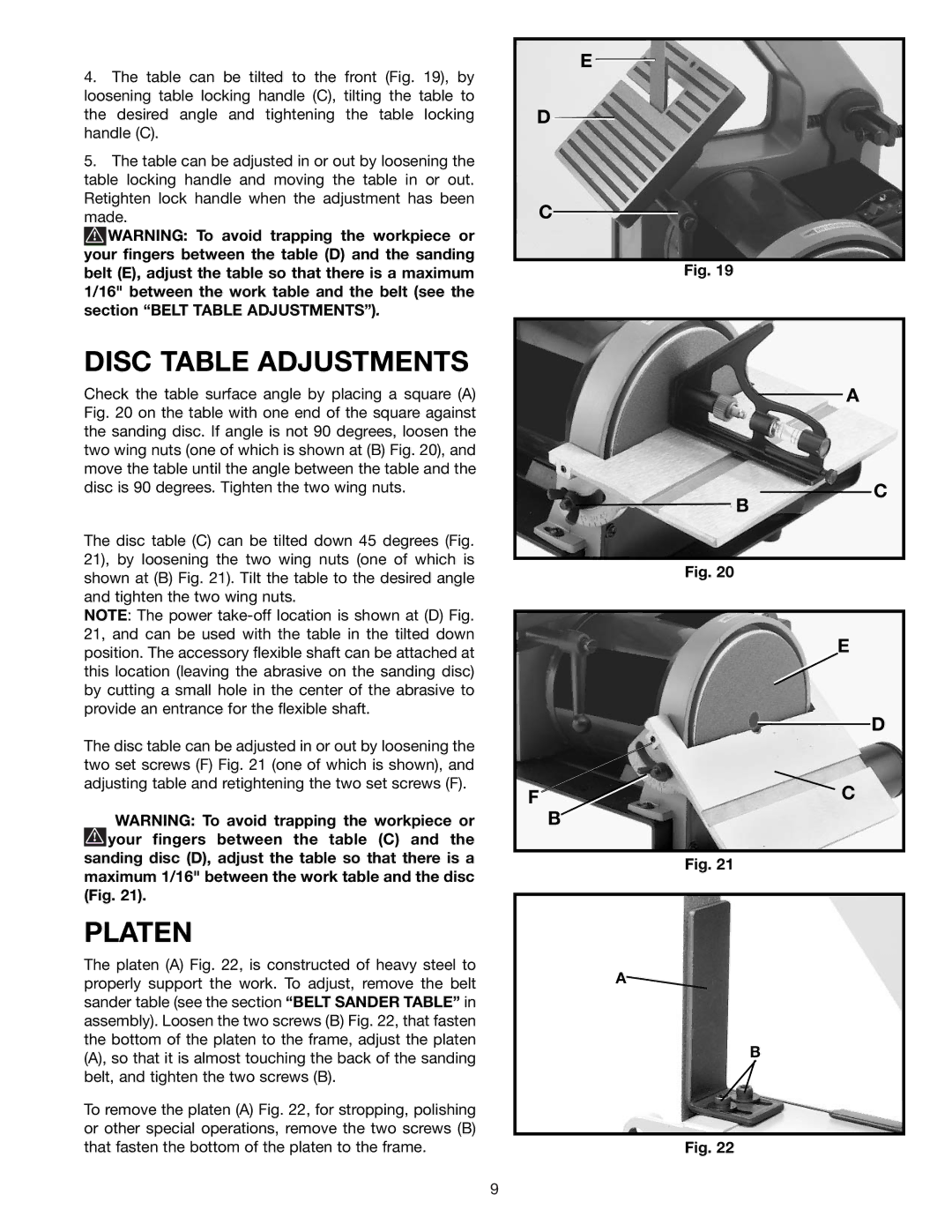
4.The table can be tilted to the front (Fig. 19), by loosening table locking handle (C), tilting the table to the desired angle and tightening the table locking handle (C).
5.The table can be adjusted in or out by loosening the table locking handle and moving the table in or out. Retighten lock handle when the adjustment has been
made.
![]() WARNING: To avoid trapping the workpiece or your fingers between the table (D) and the sanding belt (E), adjust the table so that there is a maximum 1/16" between the work table and the belt (see the section “BELT TABLE ADJUSTMENTS”).
WARNING: To avoid trapping the workpiece or your fingers between the table (D) and the sanding belt (E), adjust the table so that there is a maximum 1/16" between the work table and the belt (see the section “BELT TABLE ADJUSTMENTS”).
E
D
C![]()
Fig. 19
DISC TABLE ADJUSTMENTS
Check the table surface angle by placing a square (A) Fig. 20 on the table with one end of the square against the sanding disc. If angle is not 90 degrees, loosen the two wing nuts (one of which is shown at (B) Fig. 20), and move the table until the angle between the table and the disc is 90 degrees. Tighten the two wing nuts.
The disc table (C) can be tilted down 45 degrees (Fig. 21), by loosening the two wing nuts (one of which is shown at (B) Fig. 21). Tilt the table to the desired angle and tighten the two wing nuts.
NOTE: The power
The disc table can be adjusted in or out by loosening the two set screws (F) Fig. 21 (one of which is shown), and adjusting table and retightening the two set screws (F).
WARNING: To avoid trapping the workpiece or ![]() your fingers between the table (C) and the sanding disc (D), adjust the table so that there is a maximum 1/16" between the work table and the disc (Fig. 21).
your fingers between the table (C) and the sanding disc (D), adjust the table so that there is a maximum 1/16" between the work table and the disc (Fig. 21).
PLATEN
The platen (A) Fig. 22, is constructed of heavy steel to properly support the work. To adjust, remove the belt sander table (see the section “BELT SANDER TABLE” in assembly). Loosen the two screws (B) Fig. 22, that fasten the bottom of the platen to the frame, adjust the platen (A), so that it is almost touching the back of the sanding belt, and tighten the two screws (B).
To remove the platen (A) Fig. 22, for stropping, polishing or other special operations, remove the two screws (B) that fasten the bottom of the platen to the frame.
A
C
B
Fig. 20
E
D
FC B
Fig. 21
A![]()
B
Fig. 22
9
